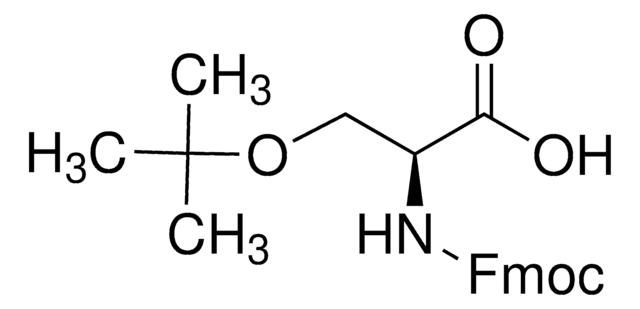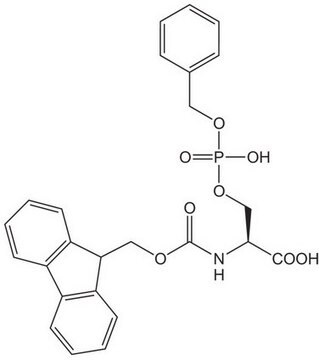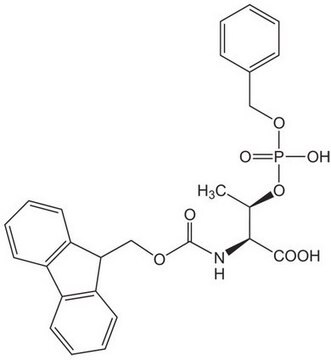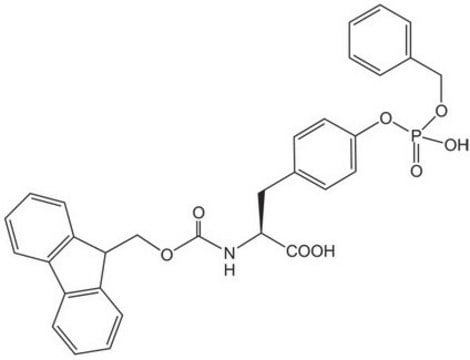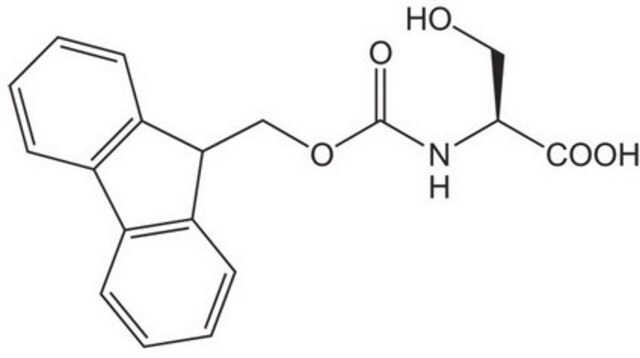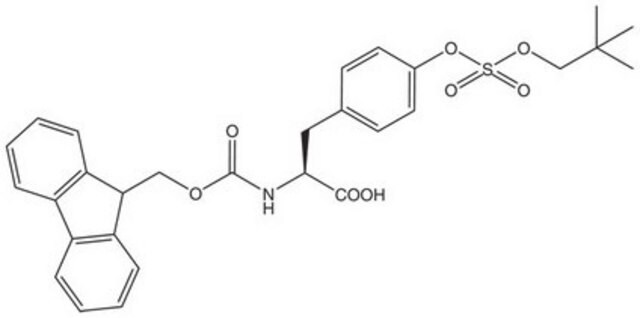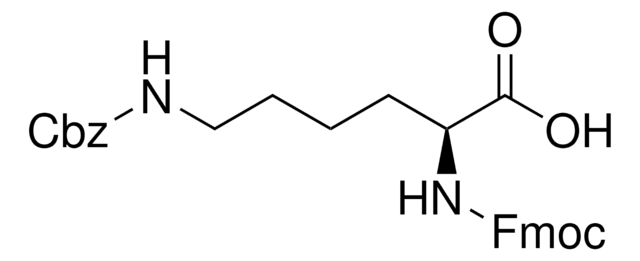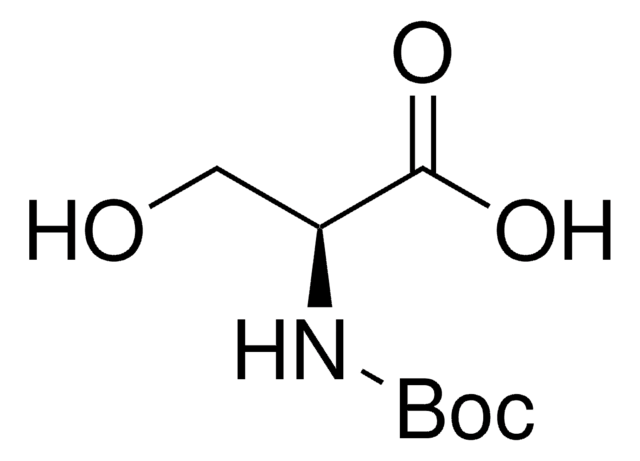903736
Fmoc-Ser(PO(NHPr)2)-OH
≥95%
Synonim(y):
Fmoc-Ser(PO(NH-CH2-CH2-CH3)2)-OH, Fmoc-protected phosphorylated serine amino acid building block, N-(((9H-Fluoren-9-yl)methoxy)carbonyl)-O-(bis(propylamino)phosphoryl)-L-serine
About This Item
Polecane produkty
Próba
≥95%
Postać
solid
przydatność reakcji
reaction type: Fmoc solid-phase peptide synthesis
Zastosowanie
peptide synthesis
grupa funkcyjna
Fmoc
temp. przechowywania
−20°C
Zastosowanie
Fmoc-Ser(PO(NPr)2)OH and Fmoc-Thr(PO(NPr)2)-OH are novel derivatives for introduction of phosphoserine and phosphothreonine in Fmoc SPPS, in which the phosphate group is fully protected as a phosphodiamidate. Model studies indicate these compounds, lacking the residual acidic proton, do not appear to suffer the aforementioned drawbacks of the currently employed monobenzylphosphate derivatives. Removal of the dimethyamino groups are removed during the course of the normal TFA cleavage and deprotection reaction.
Inne uwagi
Informacje prawne
produkt powiązany
Kod klasy składowania
11 - Combustible Solids
Klasa zagrożenia wodnego (WGK)
WGK 3
Temperatura zapłonu (°C)
Not applicable
Certyfikaty analizy (CoA)
Poszukaj Certyfikaty analizy (CoA), wpisując numer partii/serii produktów. Numery serii i partii można znaleźć na etykiecie produktu po słowach „seria” lub „partia”.
Masz już ten produkt?
Dokumenty związane z niedawno zakupionymi produktami zostały zamieszczone w Bibliotece dokumentów.
Nasz zespół naukowców ma doświadczenie we wszystkich obszarach badań, w tym w naukach przyrodniczych, materiałoznawstwie, syntezie chemicznej, chromatografii, analityce i wielu innych dziedzinach.
Skontaktuj się z zespołem ds. pomocy technicznej